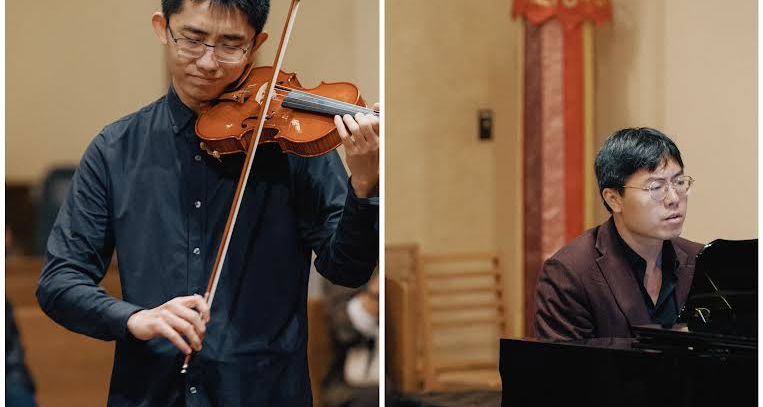
Piano/Violin Duo Play Classics in Cole Valley
Parnassus Heights, SF
Sun, July 13, 2025, at 2:00 PM,
PDT
-

- Dogs live here
-
Wheelchair access
- Not wheelchair accessible
-
- Some stairs may be present in the space
This is a groupmuse
A live concert in a living room, backyard, or another intimate space. They're casual and friendly, hosted by community members.
Hosts
We are pleased to host virtuosi artists Victor Zhou and Ran Feng. Victor is a classical pianist and composer with master’s degrees in both theoretical physics and piano performance. He loves crafting intimate, vivid, story-driven experiences that resonate with audiences. From Bach to Debussy, from timeless classics to dazzling new works, he explores music’s emotional depth and narrative power. He has performed in solo recitals, chamber concerts, and experimental multimedia settings, and he's always excited to share music with listeners from all walks of life.
To see and hear Victor perform check out his youtube page:
https://youtube.com/@xiaoyuzhao5734?si=MIebN1i4ZLKbzeS2
And, to see and hear Victor and Ran play, click on Reserve a seat.
Ran Feng is a software engineer with a big passion for classical music. He started playing the violin at age of five. From 2015-2016, Ran was the assistant concert master of Sichuan University Orchestra, He further enriched his musical experience as a member of the Student Symphony Orchestra of USC, where he had the privilege of performing the Butterfly Lovers Violin Concerto as a soloist with the orchestra in 2018. Beyond solo performance, he is a chamber music enthusiast and performed pieces by famous composers like Mozart, Beethoven, Schubert, and Mendelssohn. Ran mixes his skills in technology with his love for music in a special way.
What's the music?
J.S. Bach (1685–1750)
Gigue, from Violin Partita No. 2 in D minor, BWV 1004
Violin solo
Invention No. 12 in A major, BWV 783
Piano solo
Sinfonia No. 13 in A minor, BWV 799
Piano solo
Contrapunctus I, from The Art of Fugue, BWV 1080
Piano solo
Concerto in D minor, BWV 974
(after Alessandro Marcello) – II. Adagio
Piano solo
Chorale Prelude “Wachet auf, ruft uns die Stimme,” BWV 645
(arr. Ferruccio Busoni)
Piano solo
César Franck (1822–1890)
Violin Sonata in A major
I. Allegretto ben moderato
II. Allegro
III. Recitativo–Fantasia
IV. Allegretto poco mosso
Violin and Piano
The first half of this program invites the listener on a journey through the evolving textures of J.S. Bach’s music and the broader Baroque tradition—from the clarity of a single melodic line to the intricate interplay of four independent voices. We begin with a solo violin Gigue, full of rhythmic vitality and dance-like energy, followed by two keyboard works that exemplify Bach’s pedagogical genius: an Invention in two voices and a Sinfonia in three voices. These pieces, while concise, distill Bach’s contrapuntal language with extraordinary clarity and elegance.
The culmination of this arc is a movement from The Art of Fugue, an unfinished magnum opus that explores the possibilities of fugal writing with unmatched intellectual depth and expressive power. Along the way, we include works that illustrate how Bach adapted the music of his contemporaries, and how later generations reimagined his voice—blurring the line between homage, transformation, and timelessness.
The second half turns to César Franck’s Violin Sonata in A major, a cornerstone of the Romantic chamber repertoire. Composed in 1886 as a wedding gift for the Belgian violinist Eugène Ysaÿe, the sonata blends lush harmonic language with formal clarity. Franck, a celebrated organist and deeply spiritual musician, was profoundly influenced by Bach’s contrapuntal techniques—nowhere more evident than in the final movement, written as a canon between violin and piano. This Baroque structure becomes the vessel for radiant emotional expression, marrying tradition with lyricism.
Together, the four movements trace a human and emotional arc: two individuals meet, face and overcome conflict, endure longing, and ultimately reunite in joyful harmony. In this way, the sonata becomes not just a musical work, but a love story—a wedding in sound, echoing Bach’s structural legacy through the voice of Romanticism.
Where does this music come from?
Tonight’s program is a journey through musical lineage—tracing how ideas, forms, and emotions have evolved over centuries while continuing to connect people across time.
We begin in the Baroque era with music by Johann Sebastian Bach (1685–1750), whose works form one of the deepest roots of Western musical tradition. A master of counterpoint—the art of weaving multiple independent voices—Bach wrote not only for courts and churches, but also for students, colleagues, and his own children. His Inventions and Sinfonias were designed as teaching tools, distilling complex musical ideas into works of clarity and beauty. His solo violin dances and towering fugues demonstrate the range of expression possible within strict forms. Alongside these works, we include pieces that show how music in Bach’s time was already a conversation—composers borrowing, adapting, and responding to one another across borders and generations.
In the second half, we move to the Romantic era with César Franck’s Violin Sonata in A major (1886). A deeply spiritual composer and renowned organist, Franck admired Bach and was shaped by his contrapuntal techniques. But Franck also spoke the emotional language of the 19th century: expressive, expansive, and filled with yearning. This sonata, composed as a wedding gift, tells a story of love and union through four movements—from first meeting and misunderstanding, to longing and ultimate harmony. The final movement is a canon—an old Baroque form—revived here with Romantic warmth, closing the loop between centuries of musical thought.
This evening’s music spans nearly two hundred years, but what links it all is the belief that music—whether strict or free, intricate or lyrical—is a vessel for connection. We hope this performance not only brings you into Bach’s and Franck’s sound worlds, but also reminds us of the long, living tradition of music as a communal art.
Location
Exact address sent to approved attendees via email.
This is a groupmuse
A live concert in a living room, backyard, or another intimate space. They're casual and friendly, hosted by community members.
Hosts
Attendees



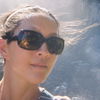

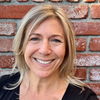

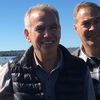









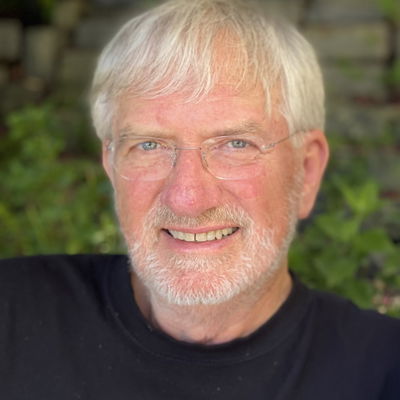

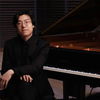
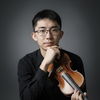
 Continue with Facebook
Continue with Facebook
 Continue with Google
Continue with Google
 Continue with Apple
Continue with Apple
Comments (1)
Comment sections are only for participants.